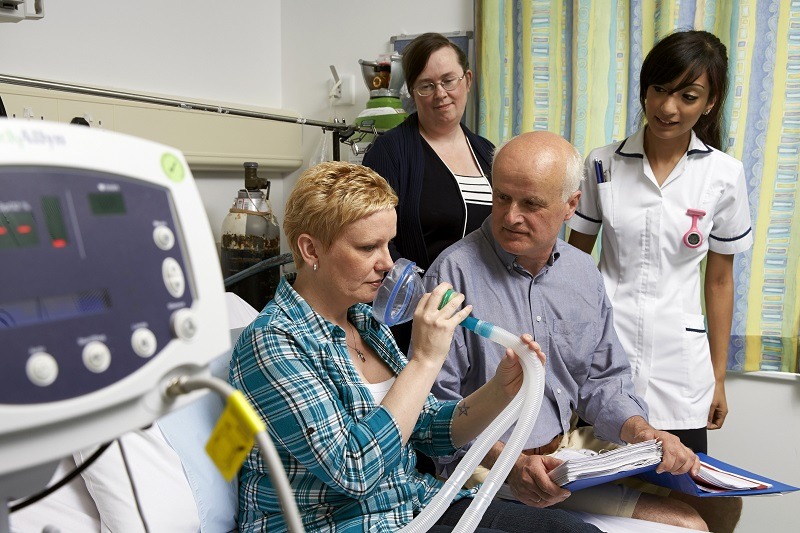
A technique that enables patients suffering from heart conditions to hold their breath safely for over five minutes could have potential as a treatment for cardiac arrhythmias, according to research lead by Michael Parkes (University of, and University Hospitals Birmingham, Birmingham, UK).
The technique—which involves hyperventilating conscious, unmedicated patients using a mechanical ventilator which delivers air to the patient via a face mask—is described in a study published this week in the journal Frontiers in Physiology, and was initially proposed as a means for earlier diagnosis of ischaemic heart disease.
The study team wrote that in patients with angiographically confirmed coronary artery disease, voluntary hyperventilation-induced hypocapnia causes some coronary artery constriction, while in healthy subjects voluntary hyperventilation is reported to cause ECG changes indicative of ischaemia. They sought to test whether angina patients could be mechanically hyperventilated non-invasively—a technique that can induce more severe and prolonged hypocapnia than via voluntary hyperventilation. The study team tested whether hypocapnia induces greater ECG changes, or even angina itself, in patients with angina due to demonstrated coronary artery disease.
Parkes and colleagues tested 18 healthy subjects, with no known cardiovascular disease, who were non-smokers, and 10 male patients aged 43–72 years with history of typical angina pectoris and angiographically confirmed severe coronary heart disease who were awaiting bypass surgery.
Following the use of the technique, the study team concluded that although more work needs to be done on its diagnostic potential for ischaemia, their research was able to confirm that mechanical hyperventilation and hypocapnia were well tolerated and safe for patients with angina.
This could, they suggest, pave the way to induce prolonged breath-holds of over five minutes to support radiotherapy, instead of radiofrequency, in the administration of cardiac ablation. In this procedure, patients with arrhythmias undergo precisely targeted radiotherapy, applied from outside the chest, to destroy tissue that is allowing incorrect electrical signals to cause an abnormal heart rhythm. Breathing is a problem, they note, as each breath causes the heart to move within the chest.
Lead author Michael Parkes explained: “There is still little awareness of the simplicity, availability, and safety of non-invasive mechanical hyperventilation. We have already shown that patients with breast cancer can breath-hold safely for over five minutes using this technique. The fact that patients with angina were able to tolerate mechanical hyperventilation so well confirms its potential to improve the newly emerging procedure of using radiotherapy for cardiac ablation.
“Stopping breathing with a safe breath-hold of over five minutes, using mechanically-induced hypocapnia and now with oxygen enriched air, could allow surgeons to target the radiotherapy for cardiac ablation much more precisely. The advantage of radiotherapy over radiofrequency or freezing is that radiotherapy is completely non-invasive and is applied from outside the chest. Whereas the other techniques require a catheter, passed via a vein in the groin or artery in the neck, to be placed inside the atria in the heart. Currently such radiotherapy is being considered only when all other ablation and pharmacological techniques have failed.”
The next step is to test this technique in patients with cardiac arrhythmias, Parkes adds.












